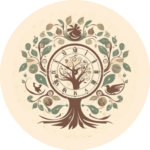A Note about Language and Inclusivity
‘Secrets of Women’ was a very common expression in the early modern period, encompassing not only matters of the female anatomy, but sex and reproduction (‘generation’) in general.
Most of the primary sources in my research use very gendered language: women, maid, matron, lady etc. I have chosen to keep this language to be as close to the sources as possible, but I intend this space to be inclusive to all genders.
Non-binary, trans and intersex people existed in the early modern period (as in all other periods of history), as they do today, and they were often discussed within the universe of ‘secrets of women’. Therefore, while ‘Secrets of Women’ might appear to refer only to cis-gendered women, it was in fact much more widely used.
When discussing these texts, I will preserve the vocabulary originally used, while when drawing comparisons to the present, I will use more inclusive language (such as ‘birthing person’ instead of ‘woman’). I will also draw from my own experiences as a cis-gendered woman.
I do not believe one needs to have a womb (or periods) to be considered a woman; nor do I believe that all people who have a womb and periods are women – and neither did early modern people, as I hope to show.

